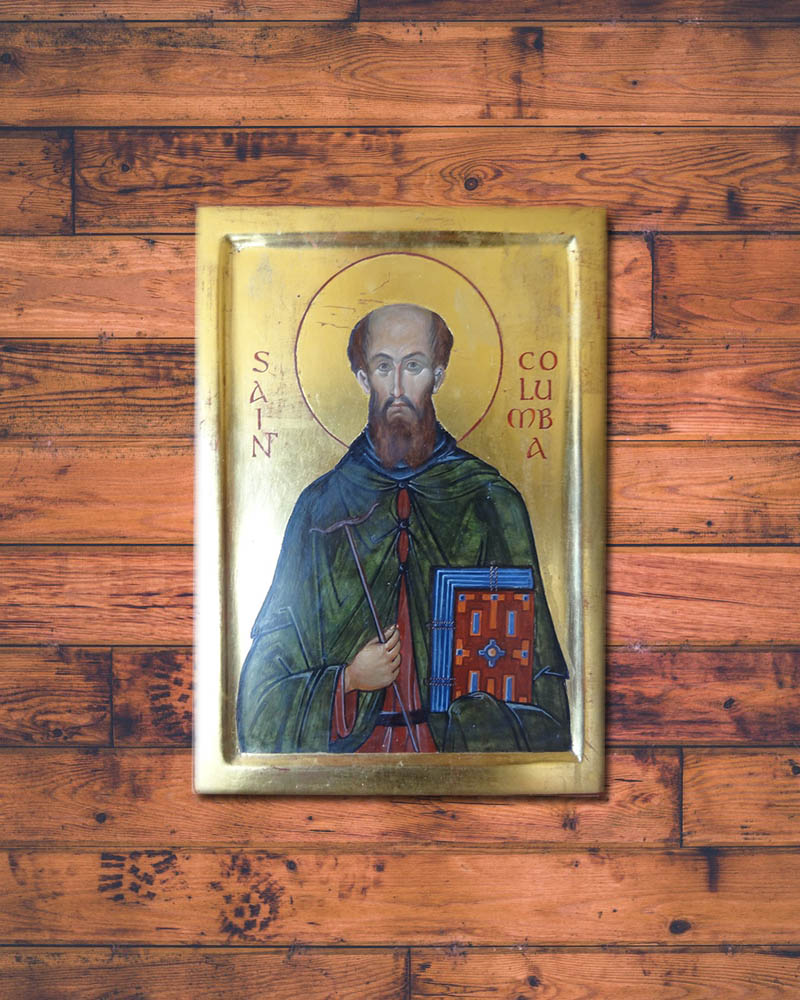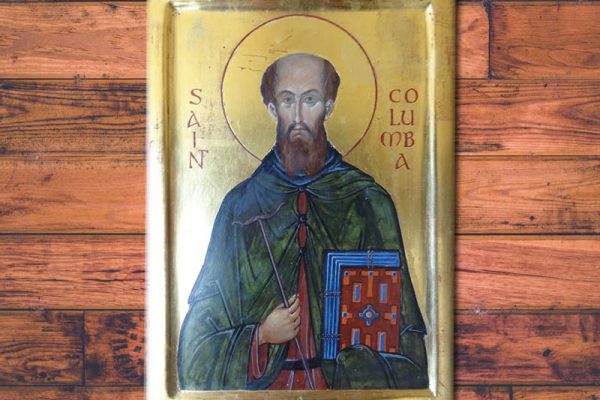By Fr. Michael Smith
 From December 7, 2020 to December 7, 2021, the Catholic, Anglican, and Presbyterian Churches in the northwestern part of Ireland (including the Irish Republic and Northern Ireland) are celebrating the 1,500th anniversary of the birth of a local son, St. Columbkille (also known as Colmcille and Columba, “Dove of the Church”). The Catholic Diocese of Raphoe, in County Donegal, has made contact with our diocese, and will communicate with us as the celebrations progress.
From December 7, 2020 to December 7, 2021, the Catholic, Anglican, and Presbyterian Churches in the northwestern part of Ireland (including the Irish Republic and Northern Ireland) are celebrating the 1,500th anniversary of the birth of a local son, St. Columbkille (also known as Colmcille and Columba, “Dove of the Church”). The Catholic Diocese of Raphoe, in County Donegal, has made contact with our diocese, and will communicate with us as the celebrations progress.
Why, you may ask, are we celebrating the event here in Pembroke Diocese? After all, St. Columbkille is virtually unknown in Canada, and few of even the most devout Catholics have heard of him. In Ireland and Scotland, however, he is a saint of great significance. He is one of the three patron saints of Ireland, along with St. Patrick and St. Brigid of Kildare. St. Columbkille’s importance to the Irish and Scottish people is the reason why some of the first European settlers in Pembroke named their parish after him. That parish would later become the cathedral of the Diocese of Pembroke, and St. Columbkille would be designated as patron saint of the diocese.
Bishop Desrochers has asked me to introduce you to St. Columbkille, which I am happy to do.
Biographical sketch
St. Columbkille was born on December 7, 520 or 521, in Gartan, in what is now County Donegal in the Republic of Ireland. His parents’ names were Fedlimid and Eithne. He was baptized at Temple-Douglas, between Gartan and Letterkenny, the present episcopal see of the Diocese of Raphoe. The priest who baptized him was named Cruithnechán, his teacher and foster-uncle. Columbkille eventually became well educated, having spent much of his adolescence and young adulthood travelling throughout Ireland to various monastic schools in search of learning.
He was already a deacon by the age of twenty, and he would later become a monk and be ordained a priest. At Iona, he would become abbot, or head monk of the monastery.
There are a couple of dark chapters in Columbkille’s life. Of interest to us, currently living under the shadow of the pandemic, is the fact that there was a pestilence in 544, which forced Columbkille to move out of the monastery where he was staying and to take refuge in another region.
An even darker chapter is a dispute, in about the year 560, between Columbkille and his mentor Finnian over the ownership of a manuscript which Columbkille had copied by hand. Sadly and tragically, a large number of people became in involved in the conflict, which became violent, leading to the deaths of many of them.
Also around this time, Columbkille was involved in a dispute between two kings, one of whom violated the right of sanctuary and killed Prince Curnan of Connacht, a fugitive and a relative of Columbkille, whom Columbkille was protecting.
In any case, about 563, Columbkille and twelve companions (later to be known as the “Twelve Apostles of Ireland”) moved to Scotland, eventually settling on the island of Iona, where St. Columbkille founded a monastery that would be the hub of evangelization efforts in Scotland, especially among the Picts, who at that time were pagan.
It would be useful, at this point, to mention a couple of details about monastic life at this time. ‘Pilgrimage’ was considered a form of penance because it deprived the person of the companionship of his or her own people. Unlike monks in the Benedictine tradition, who made a vow to spend their lives in the same monastery, Celtic monks would undertake a peregrinatio pro Christo, a pilgrimage for Christ, essentially committing themselves to be wanderers, at least for a time. That is what Columbkille did. One can surmise that he did so to remake himself and to amend for his being a cause of the violent struggles mentioned above.
Remake himself he did. He founded the monastery at Iona which became a centre of evangelization and a school for missionaries. The Christianization of Scotland was in large part the work of Columbkille and his companion monks. Columbkille eventually became known as a holy man, and thus he was sought out to mediate conflicts among tribes in the region.
Columbkille was a founder and a builder. He founded several monasteries in Ireland, and then several churches in Scotland, both on the mainland and in the Hebrides.
St. Columbkille died at Iona on June 9, 597, although some scholars place his death as early as 593. His feast day is June 9.
Significance of St. Columbkille for our spiritual journey
Someone once wrote that a saint is not someone who has never sinned, but one who has accepted God’s forgiveness many times. St. Columbkille had a checkered career in his early life, but with God’s grace he was able to turn his life around, to the point of being a peacemaker and a holy man. This should fill us with hope. Whatever our past might be, God does not give up on us, and there is no telling the wonders that God can work through us. This truth is very much in keeping with biblical portrait of holy people. With the exception of Jesus and Mary, God’s instruments in the Scriptures are invariably flawed people. The Lord was able to work wonders of conversion in them, and further wonders through them.
St. Columbkille is also a model for us in the work of evangelization. Much as St. Columbkille tirelessly announced the Gospel and built up the People of God in remote regions, so also are we called, each in his or her own way, to proclaim the Gospel and build up God’s People wherever we might be.
For further reading and viewing
For more historical details about St. Columbkille’s life, I recommend the Wikipedia article under the title ‘Columba’. Please note that St. Columbkille, or Columba, is not the same person as St. Columban or Columbanus, another Irish abbot.
https://en.wikipedia.org/wiki/Columba
Also, there is an excellent 20-minute YouTube video called, St. Columba at 1500. It is narrated by Catholic, Anglican, and Presbyterian clergy and laypeople in the region where St. Columbkille was born. Here is the link:



